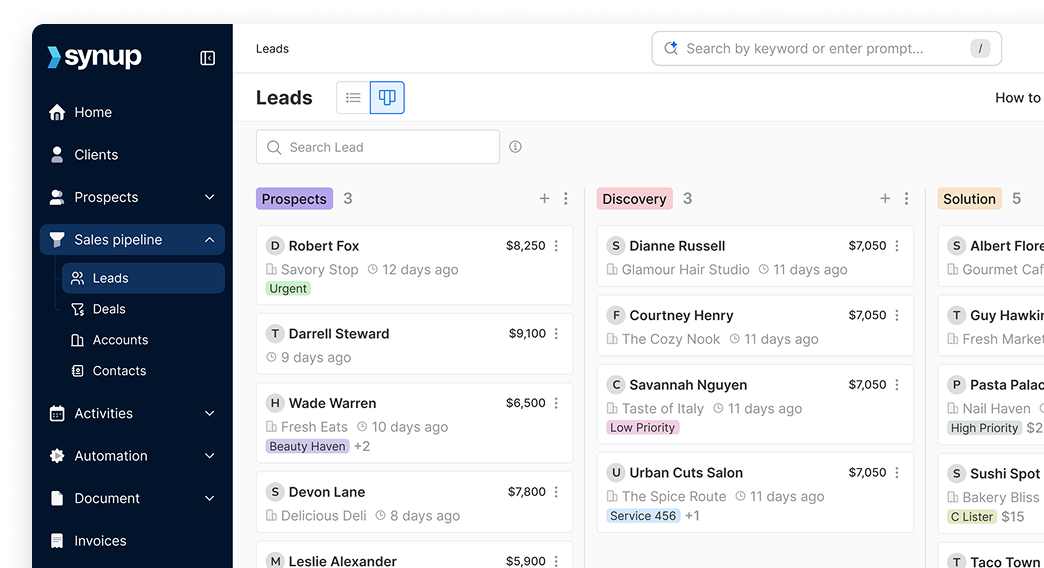What metrics and KPIs to track for your local presence
Learn how to track, measure, and improve your local listings, SEO, and online reputation for business growth. Find areas to improve your local listings.
Success in the local business landscape isn't just about setting up shop and hoping for the best. It's about understanding your audience, tracking your performance, and making data-driven decisions to improve your visibility and engagement within your community. This is where the power of metrics and Key Performance Indicators (KPIs) comes into play.
Up next, we'll explore the essential metrics and KPIs that every local business should be tracking to ensure a robust and effective local presence. We'll also introduce you to Synup, a powerful platform designed to help businesses manage and optimize their local presence across multiple channels.
Why should you measure the performance of your local listings
Measuring your local listing performance helps you understand how easily potential customers can find your business.
For example, if you run a coffee shop in downtown Seattle, tracking your visibility in local search results for terms like "best coffee in Seattle" can help you gauge your discoverability among coffee enthusiasts in the area.
Performance metrics provide valuable insights into customer behavior and preferences.
Example: For a local gym, monitoring which listing features (e.g., class schedules, amenities, or photos) attract the most clicks can help tailor your marketing approach to highlight what potential members care about most.
By measuring your performance, you can benchmark against competitors and identify areas for improvement. It also helps you understand the return on investment for your local marketing strategies. Search engine algorithms also frequently change, and measuring performance helps you adapt your strategy accordingly.
Tracking your listing performance
Your business listings across various platforms often provide the first point of contact between your business and potential customers. Here are the key metrics and KPIs you should track to ensure your listings are working hard for your local presence:
1. Listing Completeness
This KPI measures how complete your business information is across various listing platforms. Consistent listings provide more value to potential customers and can improve your visibility in local search results.
How to measure: Track the percentage of fields filled out in your listings across different platforms. Pay special attention to crucial fields like business hours, website URL, and business description.
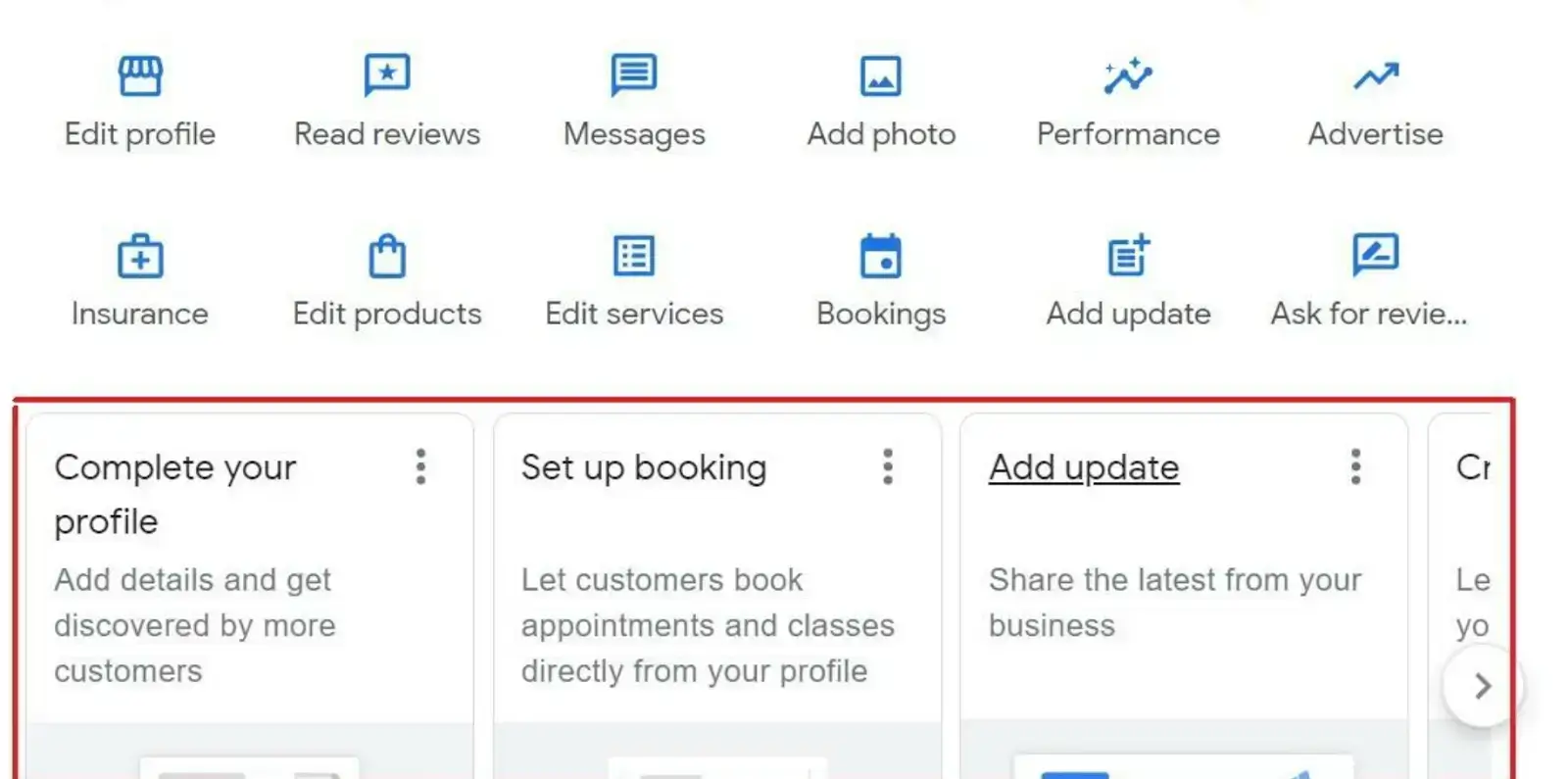
Make sure you are utilizing all the relevant attributes for your listings on major platforms like Google Business Profile, Yelp, and Bing Places.
2. Visibility in Local Search
Local Search Ranking
This metric tracks how well your business appears in local search results, both in organic listings and the "Map Pack" (the group of local businesses that appear with a map in search results). Higher rankings in local search results increase the likelihood of being discovered by potential customers.
How to measure: Use tools like Synup to track your rankings for relevant local search terms. Monitor your position in both organic results and the Map Pack. Synup also helps you track neighborhood-level rankings for your local keywords with our grid rank tracking technology.
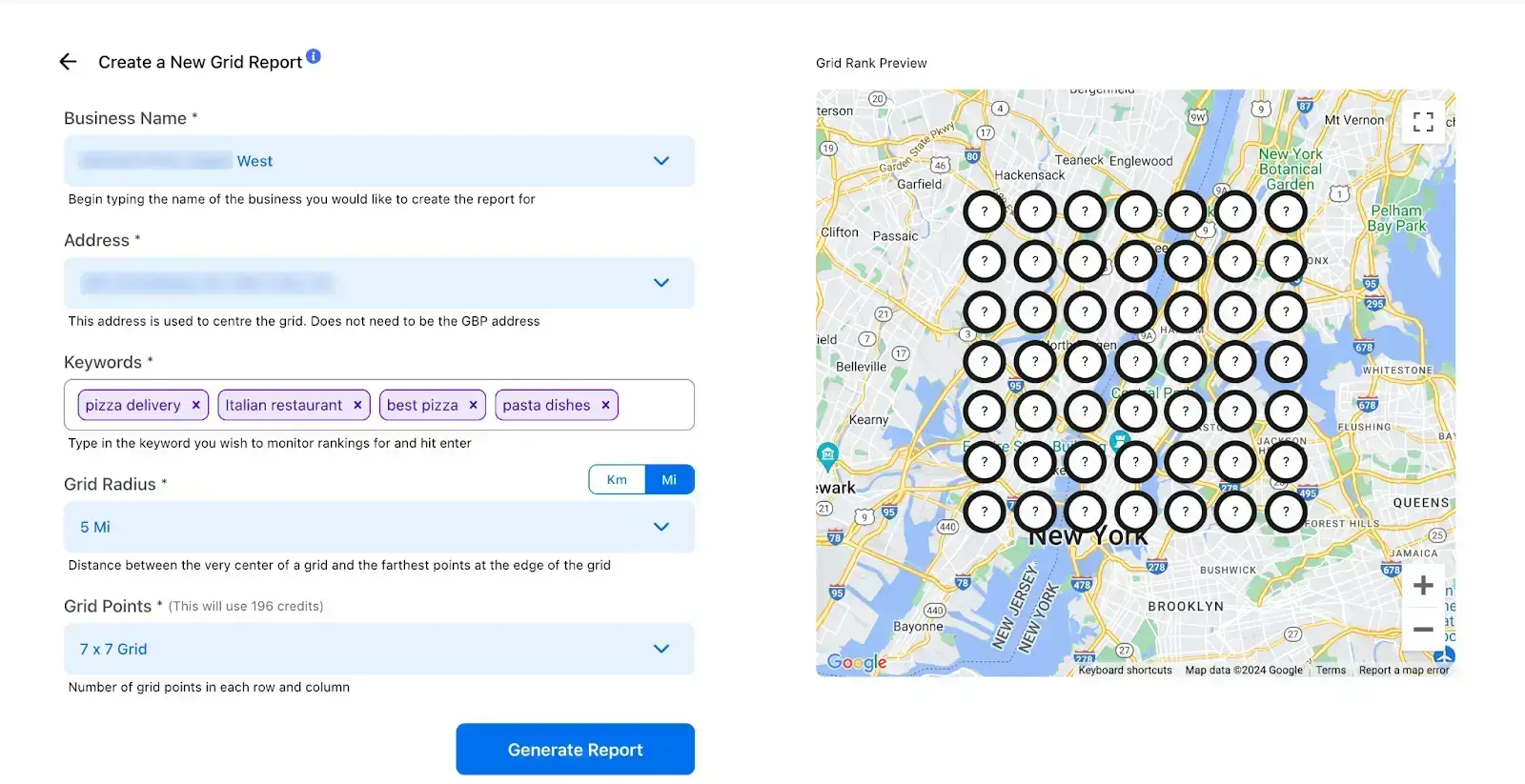
Moreover, you can check where each of your locations ranks for relevant local keywords. This helps you pinpoint locations that need additional optimization.
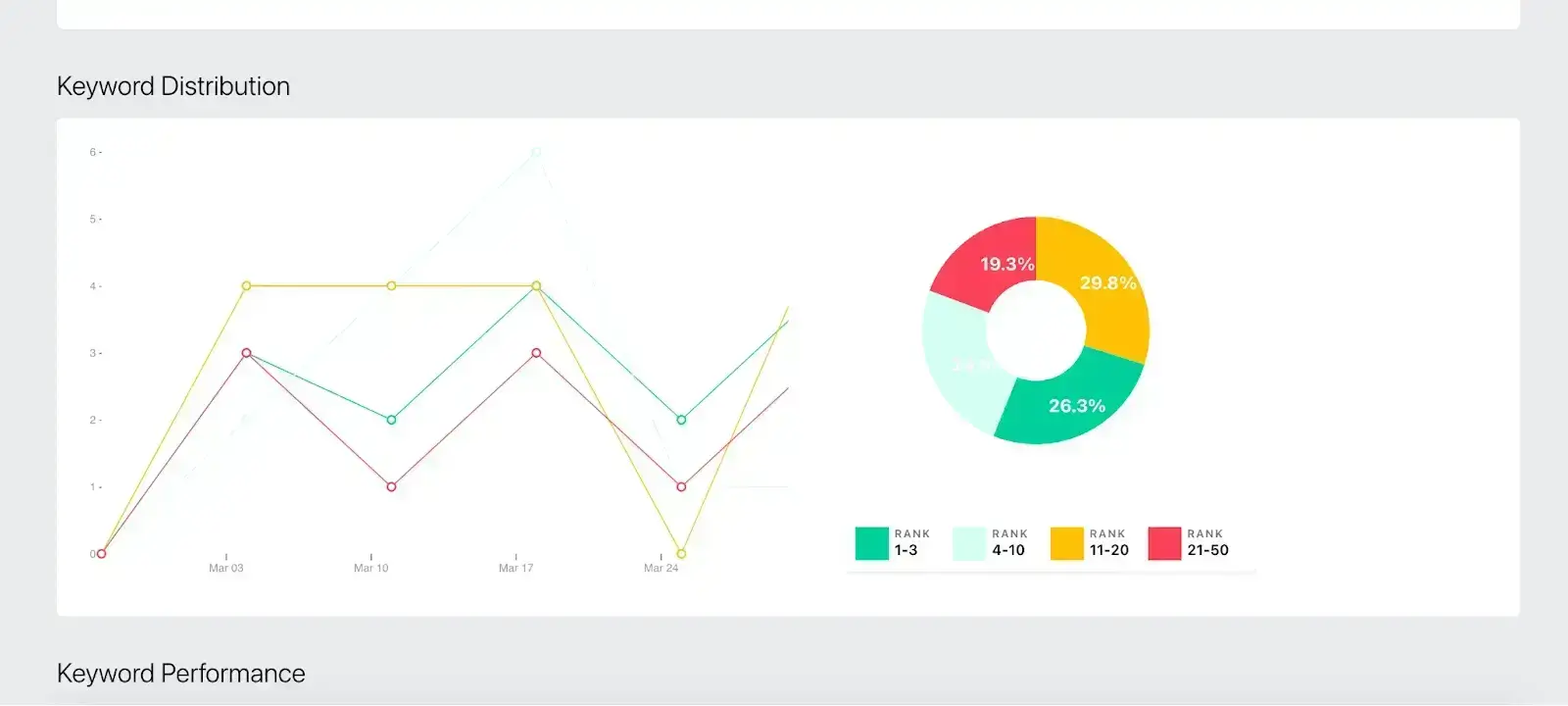
Aim to appear in the top 3 positions of the Map Pack and on the first page of organic results for your primary keywords.
Here’s how you can track your local rankings using Synup Grid Ranker
Directory Coverage
This KPI measures the number of relevant directories and platforms where your business is listed. Broader directory coverage can improve your local SEO and increase the chances of being found by potential customers.
How to measure: Keep a record of all directories where your business is listed. Synup can help automate this process by providing visibility reports across multiple directories.
Clicks and Actions from Listings
Click-Through Rate (CTR) measures the percentage of people who view your listing and then click through to your website, call your business, or request directions. Essentially you’ll know whether your listing for a certain location is converting or not. A high CTR indicates that your listing is compelling and relevant to searchers. You calculate it by dividing total actions taken by total number of profile views.
How to measure: You can use Google Business Profile insights or Synup's analytics to track clicks on your website URL, phone number, and "Get Directions" button.
One good thing about Synup is that you can also check consolidated views and overall CTR for all your locations unlike GBP insights. While CTRs can vary by industry, aim for continuous improvement month over month.
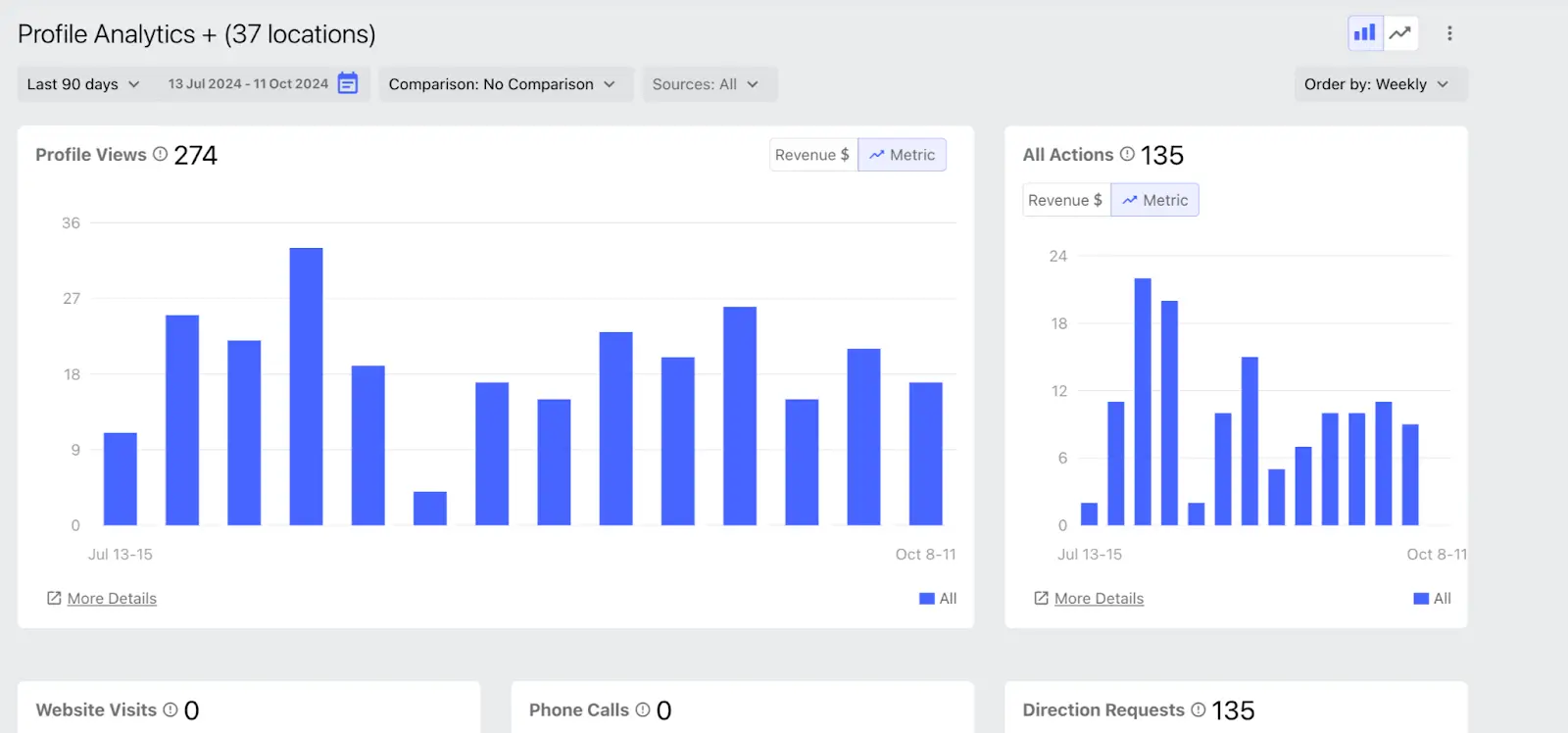
You can also break down the actions taken from your listing into specific categories:
- Clicks-to-Call: Number of people who click to call your business directly from the listing.
- Clicks-for-Directions: Number of people who request directions to your business.
- Clicks to Website: Number of people who click through to your website.
- Clicks to custom buttons: Using Synup, you can also track clicks and then CTR to any custom buttons added to your profile
Understanding which actions are most common can help you optimize your listing and website to better serve customer needs. Use Google My Business insights or Synup's detailed analytics to track these metrics.
Set individual targets for each action type based on your business goals and industry benchmarks. By consistently tracking and optimizing these listing management metrics, you can ensure that your business information is accurate, visible, and compelling across all relevant platforms. This forms a solid foundation for your local presence, making it easier for potential customers to find and engage with your business.
Measure your reputation and brand presence
Consumers heavily rely on online reviews and ratings to make decisions, so tracking reputation management metrics is crucial. Here are the key metrics and KPIs you should monitor to manage and improve your online reputation:
Review Volume and Frequency
Measure your total number of reviews which tells you the overall quantity of reviews your business has accumulated across various platforms, you can also check reviews by location and use the average number of reviews to benchmark the performance of all your locations.
A higher number of reviews can increase trust in your business and improve your visibility in local search results.
How to measure: You can try Synup's review management tool to track the total number of reviews across all platforms and locations. Alternatively, any review management tool you use should be able to give you this data. You can also manually check for all locations and maintain an Excel sheet.

Aim for a steady increase in review volume over time. The target number can vary based on your industry and location, but generally, more is better.
Review Velocity tells you how frequently your business receives new reviews. You can track on a weekly/monthly basis and then compare it with your industry average, competitors, or past data from your locations. Try to get at least 4-5 new reviews every week for each of your locations. A steady flow of recent reviews signals to both potential customers and search engines that your business is active and relevant.
How to measure: Monitor the number of new reviews you receive per week or month using Synup's review tracking features.
Average Star Rating
This is the average rating of your business across all review platforms. Your star rating is often the first thing potential customers see and can significantly impact their decision to choose your business. Aim for a rating of 4.0 or higher. Anything below 3.5 may deter potential customers.
How to measure: Use Synup to calculate and track your average star rating across all platforms.
Review Sentiment Analysis
You should check the sentiment score, which beyond star ratings, helps you analyze the actual content of reviews, categorizing them as positive, negative, or neutral. Sentiment analysis can provide deeper insights into customer satisfaction and highlight specific areas for improvement.
How to measure: Use Synup's sentiment analysis features to automatically categorize and score review content. It highlights key phrases and issues raised by customers in positive or negative reviews.
Response Rate and Time
Review response rate tells you the percentage of reviews that receive a response from your business. Responding to reviews shows that you value customer feedback and are committed to customer satisfaction. Try to respond to 100% of negative reviews and at least 50-60% of positive reviews.
How to measure: You can track the number of reviews you respond to versus the total number of reviews received. Platforms like Synup help you check response rates for individual locations.
Average Response Time tracks how quickly you respond to reviews on average. Quick responses demonstrate attentiveness and can help mitigate the impact of negative reviews.
How to measure: You will have to monitor the time between when a review is posted and when you respond. Some review platforms allow you to do this using their analytics.
It’s a common best practice to respond to all reviews within 24-48 hours, with priority given to negative reviews.
Review Distribution
Platform Diversity This metric looks at how your reviews are distributed across different platforms (e.g., Google, Yelp, Facebook, industry-specific sites). A diverse review profile can improve your overall online visibility and cater to customers who prefer different platforms. Aim for a strong presence on at least 3-5 major review platforms relevant to your industry.
By diligently tracking these reputation management metrics, you can gain valuable insights into how customers perceive your business. This information allows you to make data-driven decisions to improve your products, services, and customer experience, ultimately strengthening your local presence and attracting more customers.
Track your social media performance
Social media platforms have become essential channels for local businesses to connect with their community, build brand awareness, and drive customer engagement. Here are the key social media metrics you should track to measure and improve your local presence:
Reach and Impressions
Total Reach measures the number of unique users who have seen your content across all social media platforms. Reach indicates how far your message is spreading within your local community. Aim for consistent growth in reach over time, with a focus on reaching your local target audience.
How to measure: You can utilize native analytics tools on each platform or Synup's social media analytics to track reach across all your accounts.
Impressions represent the total number of times your content has been displayed, regardless of whether it was clicked or not. Different platforms may have different definitions of impressions and how they calculate them. Impressions give you an idea of how often your content is being seen, which can help in assessing brand visibility. Look for an upward trend in impressions, especially for content related to local events or promotions.
How to measure: Most social media platforms provide impression data in their analytics. Synup can aggregate this data across all your social media platforms.
Engagement Rate
This metric measures the level of interaction your content receives relative to your reach or follower count. A high engagement rate indicates that your content resonates with your local audience and encourages interaction.
How to measure: Calculate the total number of engagements (likes, comments, shares, etc.) divided by your reach or follower count. Synup can automate this calculation across platforms.
Try to compare against an engagement rate of 1-5% on Facebook and Instagram, and 0.5-1% on Twitter. These rates can vary by industry, so also benchmark against competitors.
Follower Growth
This metric tracks the rate at which you're gaining new followers on your social media accounts. Steady follower growth indicates increasing interest in your brand within your local community.
How to measure: Track the number of new followers gained over a specific period. Calculate the growth rate as a percentage increase.
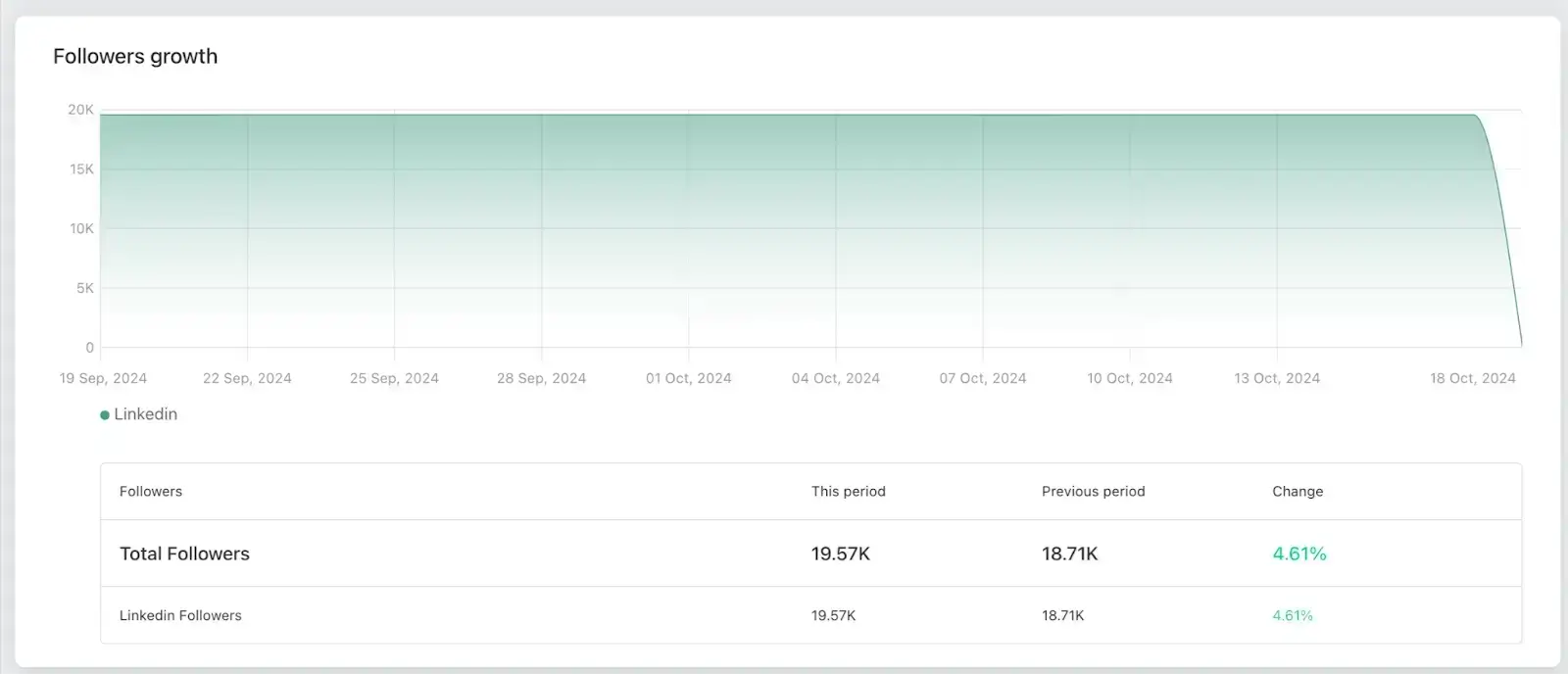
Look for consistent, organic growth. The exact rate will depend on your business size and local market, but even a 1-2% monthly growth can be significant for local businesses.
Post Performance
Identify which posts generate the most engagement and reach. Understanding what content resonates best with your local audience can help you refine your social media strategy.
How to measure: Many social media platforms give you individual performance data for your posts to identify posts with the highest engagement rates and reach..
Local Relevance
You can check this by tracking local hashtag performance if you use any location-specific hashtags in your posts. Track the performance of posts using local or community-specific hashtags. This metric can indicate how well you're connecting with local conversations and trends.
How to measure: Monitor engagement rates and reach for posts that are using local hashtags.
The idea is to see how well your locally relevant content performs and whether it helps your brand reach the right local audience for your business.
By tracking these social media engagement metrics, you can gain valuable insights into how effectively you're connecting with your local audience. Use these metrics to refine your social media strategy, create more engaging content, and strengthen your local community relationships.
Best Practices for Measuring the Performance of Your Local Listings
Effectively measuring the performance of your local listings is crucial for maintaining a strong local presence.
Establish a Consistent Measurement Schedule
Establish a routine for reviewing your local listing metrics. This could be weekly for key metrics and monthly for more comprehensive analyses. Develop a calendar that outlines when to check specific metrics, ensuring no important data points are overlooked.
Use a Centralized Dashboard
Utilize a platform like Synup that aggregates data from various sources into a single dashboard for easier monitoring and analysis. Set up your dashboard to highlight the most critical metrics for your business, allowing for quick insights at a glance.
Focus on Trend Analysis
While single metrics are important, focus on trends over time to get a more accurate picture of your local listing performance. Analyze how your listings perform on different platforms to identify where you're excelling and where improvements are needed.
Benchmark Against Competitors
Select 3-5 local competitors to benchmark against. Look at metrics like review ratings, number of reviews, and local search rankings to see how you stack up against the competition.
Align Metrics with Business Goals
Ensure the metrics you're tracking align with your overall business goals, whether that's increasing foot traffic, boosting online sales, or improving brand awareness. Create Specific, Measurable, Achievable, Relevant, and Time-bound goals for your local listing performance.
Regularly Audit Your Listings
Perform thorough audits of your listings across all platforms at least quarterly to ensure accuracy and consistency. You can use Synup's listing management features to automate the auditing process and quickly identify discrepancies.
Act on Insights
Based on the insights gathered from your metrics, create a clear plan of action to address any issues or capitalize on opportunities. Implement changes based on your insights, then measure the results and refine your approach accordingly.
Integrate with Other Marketing Efforts
Ensure your local listing performance measurement aligns with your broader marketing efforts for a cohesive approach. Share insights from your local listing performance with other marketing teams to inform overall strategy.
Stay Updated on Platform Changes
Stay informed about changes to major platforms like Google My Business, as these can affect how metrics are reported or what new metrics become available. Be prepared to adapt your measurement strategy as platforms evolve and new features become available.
Conclusion
Remember, the goal of tracking these metrics isn't just to collect data—it's to gain actionable insights that can help you connect more effectively with your local audience, improve your visibility in local searches, and ultimately drive more customers to your business.
Tools like Synup can significantly streamline the process of tracking and analyzing these metrics across multiple platforms. By centralizing your data and providing comprehensive analytics, such tools empower you to focus on what really matters: using these insights to enhance your local marketing strategies and grow your business.
FAQs
What is local analysis?
Local analysis is the process of examining data and metrics specific to a business's performance in a particular geographic area. It involves studying factors such as local search rankings, customer reviews, and engagement with local audiences to understand and improve a business's visibility and reputation within its local market.
What is the use of local rank?
Local rank refers to a business's position in local search results, particularly in the "Local Pack" or map listings. It's crucial because higher local ranks increase visibility to nearby customers. It also drives more foot traffic and local website visits and builds credibility and trust within the local community. It can further lead to higher conversion rates for location-based searches.
How do you rank in local search?
First, optimize your Google My Business listing with accurate, complete information. Ensure NAP (Name, Address, Phone) consistency across all online platforms. Gather and respond to customer reviews and create locally relevant content on your website. Build local backlinks from reputable sources. Use local keywords in your online content and meta tags. Encourage check-ins and user-generated content from local customers. And finally, ensure your website is mobile-friendly and loads quickly.




